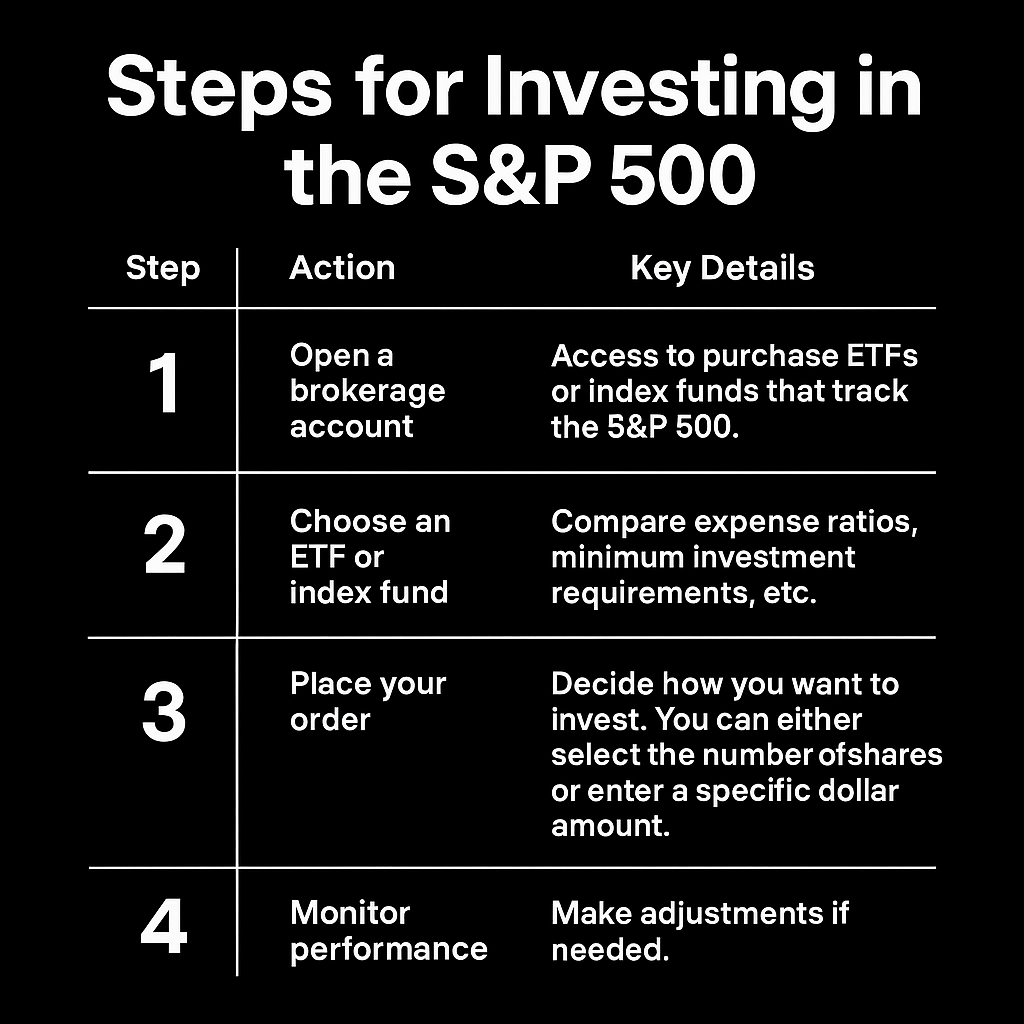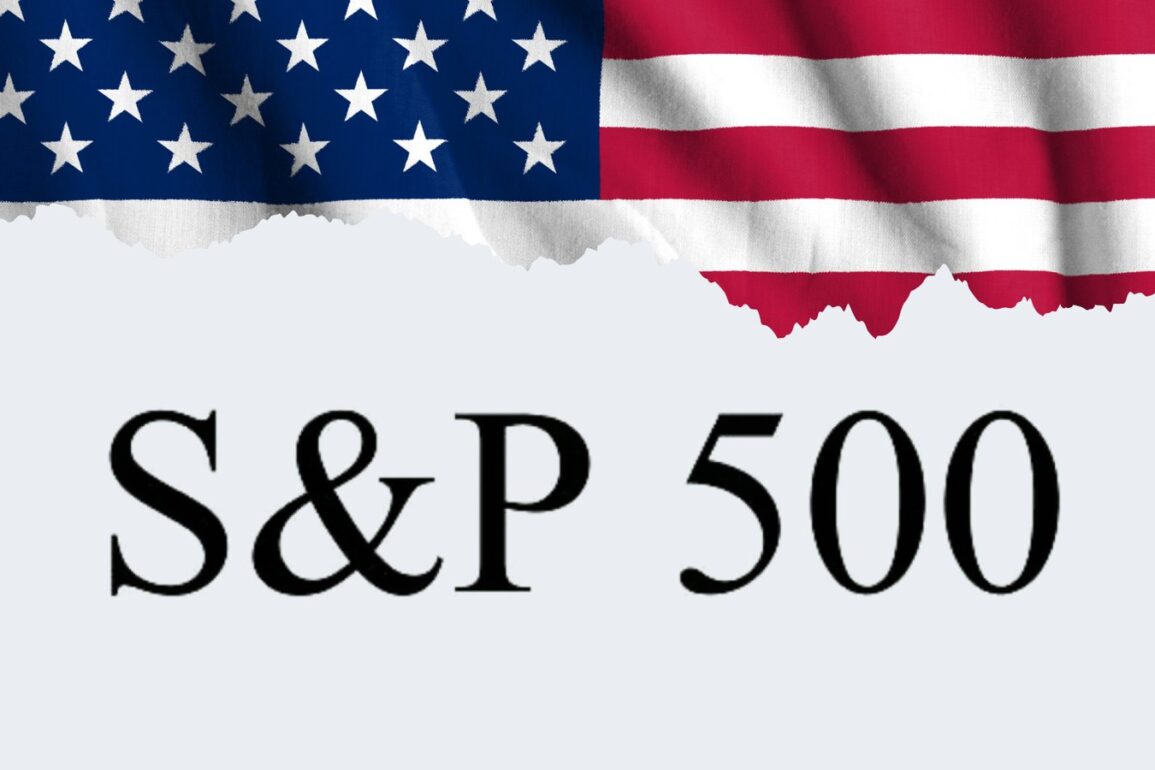If you want exposure to the S&P 500 without the hassle of buying shares in all 500 companies yourself, the simplest route is through an S&P 500 index fund or ETF. These investment vehicles are built to mirror the index’s performance, giving you instant access to a wide mix of leading U.S. companies in a single trade.
Because they hold a slice of each company in the index, these funds offer immediate diversification, spreading your risk across sectors instead of tying your fortunes to a single stock. If the S&P 500 rises, so will your investment, and if it falls, you’ll feel that too.
Getting started is straightforward. Open a brokerage account, deposit funds, and choose your preferred S&P 500 fund or ETF. Once purchased, it will sit in your portfolio, automatically adjusting as the index changes.
When it comes to investing, you can either put in a lump sum or spread your purchases out over time. Many long-term investors prefer a steady, periodic approach, adding to their position regularly, regardless of market swings, to smooth out the impact of short-term volatility. Trying to “time the market” is tempting, but rarely pays off. The goal is to stay invested and let the index work for you over the years.

ETF vs Index Fund: Key Differences for S&P 500 Investors
Both ETFs and index funds give you the same core benefit, exposure to all 500 companies in the S&P 500, but they operate differently.
ETFs trade like regular stocks, meaning you can buy or sell them any time the market is open, and prices fluctuate throughout the day. Index funds, on the other hand, are priced only once per day after the market closes, so all buy and sell orders execute at that set price.
What You’ll Pay to Invest in the S&P 500
If you go with an S&P 500 index fund
Many of these funds have no minimum investment, so you can start with whatever amount you’re comfortable with. Others set a minimum threshold you’ll need to meet before you can put money in.
You’ll also pay what’s called an expense ratio, an annual management fee shown as a percentage of your investment. For example, if you put $100 into a fund with a 0.04% expense ratio, you’d pay $0.04 a year in fees.
If you choose an S&P 500 ETF
ETFs trade on the stock market just like individual shares, which means you can buy them during market hours at the going price. Some brokers let you buy fractional shares, so you don’t need the full share price to get started.
As with index funds, ETFs carry expense ratios. While these are usually low, it’s worth checking before you invest. Over time, even small fee differences can add up.
Bottom line: Whether you pick a fund or an ETF, the overall costs are generally low. Knowing the minimum investment requirements and ongoing fees upfront can help you make a smarter, more cost-effective choice.


